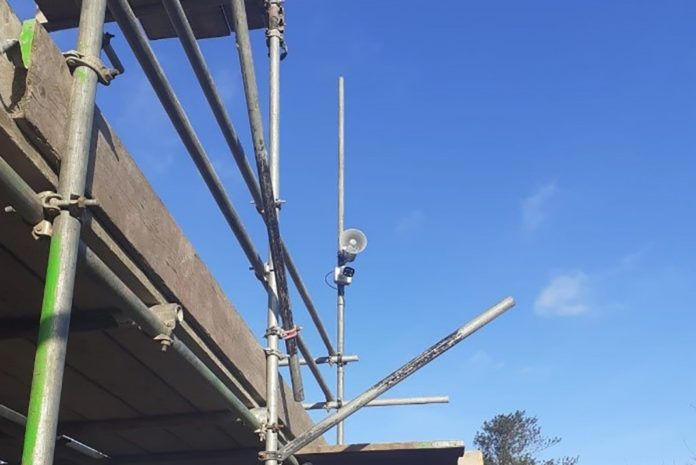According to figures from the Health and Safety Executive (HSE), over the last five years there has been an average of 36 construction-related fatalities to workers and five to members of the public. Almost 50% of deaths over the same five year period were due to falls from height.
The purpose of HSE’s The Work at Height Regulations 2005 is to prevent death and injury caused by a fall from height. These Regulations apply to employers and those who may subcontract work that is being carried out at height.
Any work at height must be properly planned, supervised and carried out by trained personnel. This includes using the right type of equipment for working at height.
Here, construction site safety and security specialists SafeSite Facilities outline some of the concerns that employers and employees should consider to ensure that the people working at height, and the assets they are working on, are properly protected.
Collective protection
Although The Construction (Design and Management) Regulations place restrictions on the need for work to be carried out at height, and positively encourages it to be ‘designed out’ of new developments, sometimes it is unavoidable. In those instances, measures that protect everyone who is at risk (collective protection) should always be considered before measures that protect only the individual (personal protection). An example of collective protection could be a safety barrier or railing, whereas personal protection could be a safety harness connected to a suitable anchor point, via an energy absorbing lanyard.
The phrase ‘passive protection’ may also be used interchangeably with collective protection. With this safety measure, for instance, using railing, there’s no further equipment or training required, other than working within the rail. Railing is one of the simplest and most effective fall protection systems to use.
Personal responsibility
There is a legal obligation for employees to ensure health and safety requirements are complied with. This includes reporting any safety hazards to their employer and using safety equipment correctly. Employees must be consulted on any risks arising from their work, proposals to control these risks and the best ways of providing safety information and training.
Work equipment
Roof work is high risk and falls from roofs, through fragile roofs and roof lights are one of the most common causes of workplace death and serious injury. All work at height equipment, such as scaffolding, must be assembled or installed according to the manufacturer’s instructions and in keeping with industry guidelines. Any work equipment exposed to the weather or any other conditions that could cause it to fail should be regularly inspected. This is particularly important if equipment is hired in from an outside company, who should make it very clear when the last inspection was carried out.
Personal Protective Equipment
There is specific Personal Protective Equipment (PPE) for those working at height, such as full-body harnesses, additional heat protection (for workers welding at height), retractable lanyards etc. Every working environment is different so working conditions should be evaluated on a case by case basis and the correct PPE selected according to specific site requirements. PPE is only effective if it is used correctly. Harnesses and lanyards should be inspected annually by someone with the expertise and authority to recognise a hazard and to correct it. Workers should also take responsibility to inspect their PPE before they use it and to know what steps to take if there is an issue. These checks are vital as, quite simply, they could mean the difference between life and death.
Safety lighting
Mobile lighting towers provide powerful illumination for construction sites, highway works and outdoor events.
These temporary lighting solutions illuminate a wide area, which is automatically activated once the sensors detect dim lighting. This is a useful security measure and, crucially, it means work at height can be carried out safely at night or in an emergency situation.
Some mobile LED lighting towers also boast a number of environmental benefits, for example, energy-saving LED lamps that will work for up to 50,000 hours, helping to reduce expensive call-out costs associated with replacing bulbs.
Property protection
Construction sites are home to expensive materials, machinery and work equipment. Scaffolding alarms not only protect these valuable assets, they also act as an effective deterrent against trespassers and thieves. Some insurance policies may not pay out if scaffolding installed at a property, which is subsequently burgled, does not have an alarm fitted.
Some of the most efficient scaffolding alarms are those that include a visual verification system, which has the ability to capture a snapshot – and store it for a period of time – when the alarm beams are broken. This confirms whether or not the breach is serious, helping to save man hours responding to false alarms
An incorrectly fitted alarm system is as bad as not having an alarm at all so it’s important to work with a skilled alarm specialist who will ensure the scaffolding alarm is installed properly. A security expert will also be able to adapt the alarm system to individual requirements, incorporating additional sensors or sounders. A professional system will also be installed to comply with industry standards, for operability and peace of mind.
For further information about how to work at height safely and securely, HSE has produced this guidance to help employers comply with the law.




